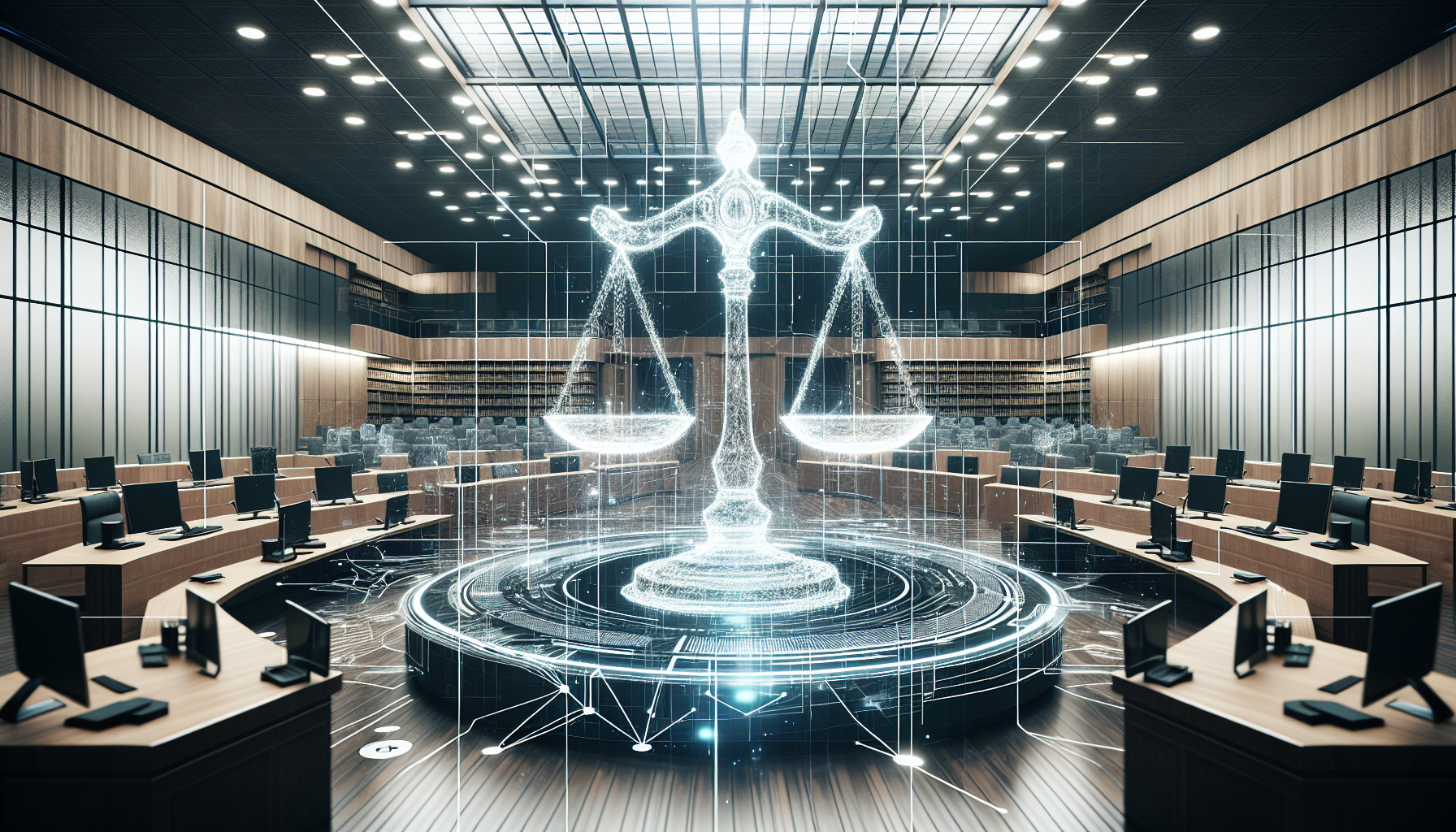
Navigating the Legal Maze: Introduction to Adoption and Guardianship Notices
Legal practitioners specializing in family law often face the complex and emotionally charged realm of adoption and guardianship notices. Navigating these areas requires a nuanced understanding of both legal intricacies and empathetic communication. These notices help establish legal relationships and clarify responsibilities, often serving as the foundation for lifelong connections. The meticulous nature of these notices makes their drafting a delicate task, demanding both precision and compassion.
By integrating advanced tools like ChatGPT, the legal community can streamline the process, ensuring legal notices are both precise and timely. Let’s delve into how this AI-driven tool can reshape your approach to drafting adoption and guardianship notices, providing both efficiency and reliability.
Why ChatGPT is Your New Best Friend: A Quick Overview
In an increasingly digital world, AI tools like ChatGPT have become indispensable allies for legal professionals. With its capabilities extending beyond simple text generation to providing context-sensitive legal language, ChatGPT is a game-changer.
– Efficiency: Quickly draft and refine legal documents.
– Accuracy: Leverage AI’s comprehensive understanding of legal terminology.
– Customization: Tailor outputs to specific client needs and judicial requirements.
Using ChatGPT in legal practice isn’t just about speeding up routine tasks—it’s about elevating the quality of your legal drafts and ensuring compliance without sacrificing the nuance and detail required in sensitive documents.
Also read:
Setting the Scene: Personalized Prompts for Drafting Legal Notices
To maximize ChatGPT’s potential in creating compelling and accurate adoption and guardianship notices, crafting effective prompts is crucial. Let’s explore the essential components and customization strategies to ensure your prompts yield the best results.
Prompt Frameworks: Essential Components
A well-structured prompt is pivotal in guiding ChatGPT. Essential elements include:
– Case Details: Specifics such as names, relationships, and case numbers.
– Legal Context: Jurisdiction-specific legal considerations and terms.
– Desired Outcome: Clear intentions regarding what the notice aims to achieve.
– Tone and Style: Indications of the required formality and empathy levels.
Tailoring Prompts to Specific Cases
Every case has unique attributes that must be reflected in your prompts. Tailoring them involves:
– Incorporating Context: “Draft a formal guardianship notice for John Doe who is seeking custody of his minor niece, Jane Smith, in the jurisdiction of California.”
– Specifying Legal Nuances: “Create a notice for an uncontested adoption of a child in Texas, focusing on Section 162 of the Texas Family Code.”
– Adjusting Emotional Tone: “Compose a compassionate adoption notice that reassures the biological mother about the process.”
Using these strategies will ensure that your legal documents are not only accurate but also resonant with the intended audience.
Also read:
The Art of Precision: Creating Customized Legal Language
Crafting legal notices requires a blend of technical command and linguistic finesse. Here’s how ChatGPT can aid your practice.
Leveraging Legal Jargon with ChatGPT
Accuracy in language is non-negotiable in legal documentation. Using ChatGPT, you can seamlessly integrate complex legal terminology, ensuring that the documents adhere to required standards. For instance:
– Guardianship Petitions: “Generate a legal notice petition for temporary guardianship, ensuring inclusion of statutory references under New York Family Law.”
– Adoption Procedures: “Provide a detailed notice for step-parent adoption, highlighting compliance with the Interstate Compact on the Placement of Children (ICPC).”
Ensuring Clarity and Compliance
Although specific jargon is necessary, clarity remains paramount. ChatGPT assists in balancing technical terms with comprehensibility:
– Simplifying Complex Sentences: “Rewrite the following clause to make it clearer while retaining the legal integrity: [complex legal clause].”
– Ensuring Plain Language: “Convert this complex legal argument into plain language suitable for a client communication regarding their adoption notice.”
This dual capability of precision and clarity ensures robust, legally sound documents that are easily understood by all stakeholders.
Also read:
Speeding Up the Process: Workflow Integration Tips
Combining the precision of legal practice with the efficiency of AI can significantly streamline workflows. Here’s how to integrate ChatGPT into your process.
Automating Repetitive Tasks
Repetitive tasks, like preliminary drafts and basic legal research, can be automated:
– Template Creation: “Create a template for an initial guardianship application notice, complying with Illinois state law.”
– Real-Time Modifications: “Instantly amend the adoption notice based on the latest case law updates in Florida.”
Real-Time Collaboration with Legal Teams
ChatGPT also enhances collaboration within legal teams:
– Draft Sharing: “Compile a draft guardianship notice for internal review, ensuring all required components are included.”
– Feedback Incorporation: “Revise the attached legal notice based on team feedback, prioritizing clarity and accuracy.”
Implementing these strategies ensures a more fluid, efficient workflow, with reduced turnaround times for critical documents.
Also read:
Beyond Notices: Utilizing ChatGPT for Comprehensive Case Management
The utility of ChatGPT extends beyond drafting notices. It can be an invaluable tool for overall case management.
Document Organization
Keeping case documents organized and easily accessible is crucial:
– Categorize and Summarize: “Organize adoption case files and generate summaries for each client interaction.”
– Automate File Naming: “Automatically name and categorize legal documents based on content and date.”
Research and Data Retrieval
Efficient research capabilities are another significant advantage:
– Legal Precedents and Statutes: “Retrieve relevant case law precedents for a contested guardianship case in Ohio.”
– Data Compilation: “Compile statistical data regarding adoption rates for community outreach reports.”
By leveraging ChatGPT’s comprehensive capabilities, legal professionals can enhance all facets of case management.
Also read:
Ethical and Confidentiality Concerns: Safe Practices When Using AI
While AI presents numerous benefits, it’s imperative to address ethical and confidentiality concerns.
Protecting Sensitive Information
Using AI responsibly involves safeguarding client data:
– Data Anonymization: “Ensure all generated documents anonymize sensitive client information.”
– Secure Storage Protocols: “Store AI-generated data securely, complying with state and federal legal standards.”
Ensuring AI Compliance with Legal Standards
Compliance with regulatory standards is non-negotiable:
– Regular Audits: “Conduct regular audits to ensure AI outputs comply with jurisdiction-specific legal standards.”
– Ethical Use Policies: “Develop and enforce ethical use policies for AI in legal practice, ensuring transparency and accountability.”
Implementing these measures protects both client information and the integrity of legal practice.
Bringing It All Together: Final Thoughts and Best Practices
Integrating ChatGPT into the process of drafting adoption and guardianship notices offers immense potential for efficiency and precision. However, leveraging this tool effectively requires thoughtful prompt creation, careful customization, and adherence to ethical standards. By doing so, legal professionals can ensure their practice remains both progressive and compliant, ultimately benefiting clients who rely on these crucial documents for their life-changing journeys.
Consistently refining your use of AI tools like ChatGPT will undoubtedly streamline your workflow and enhance the quality of your legal notices, making your practice more productive and resilient in an ever-evolving legal landscape.


